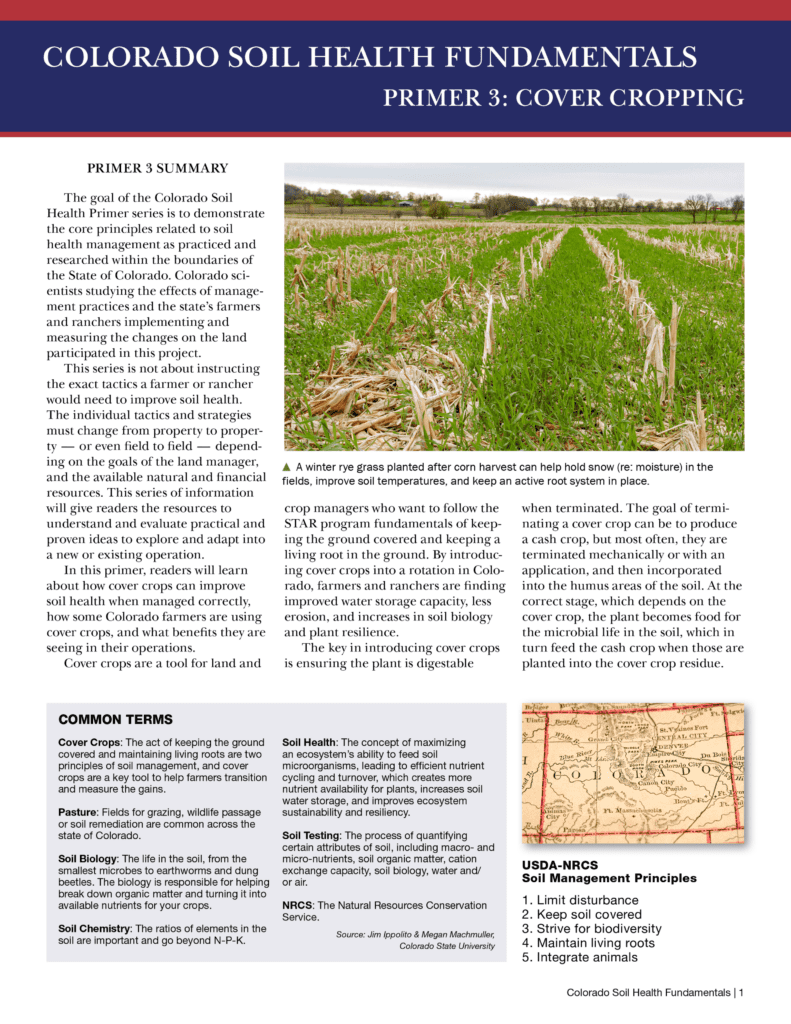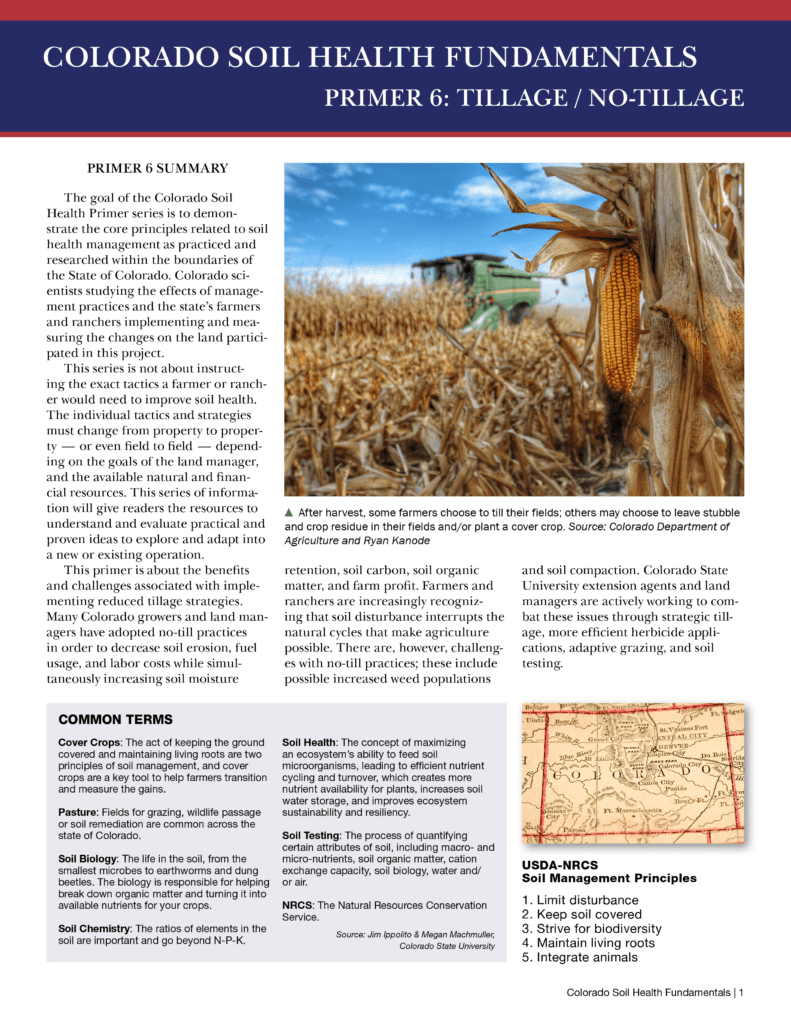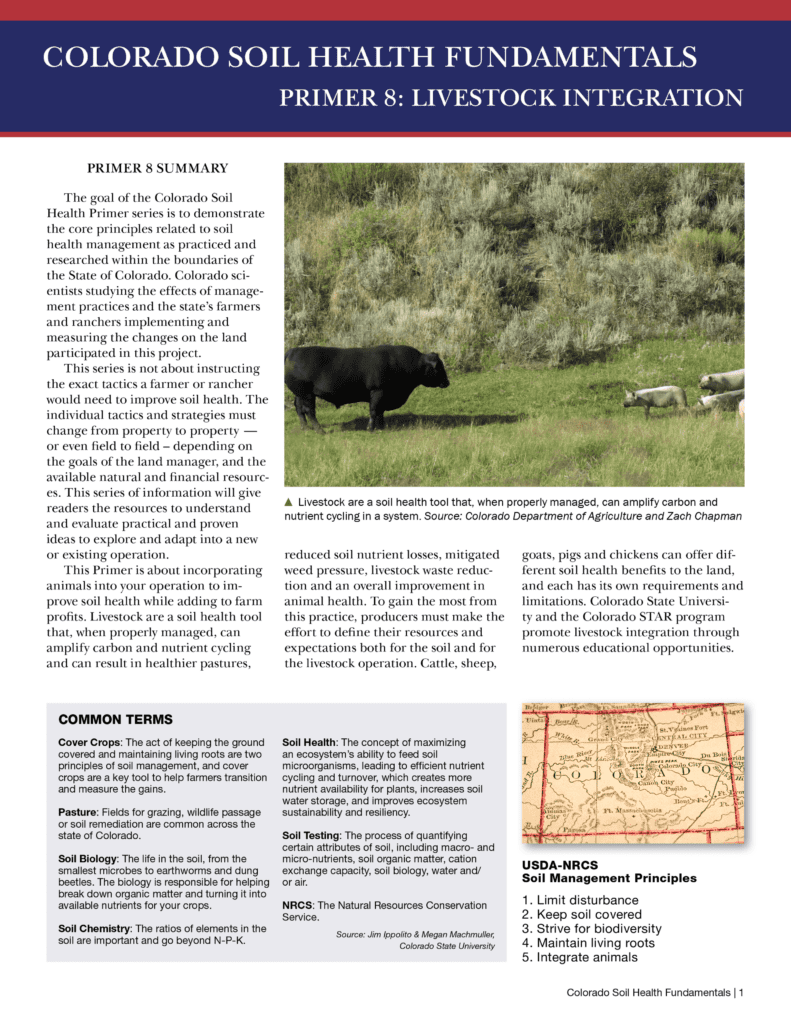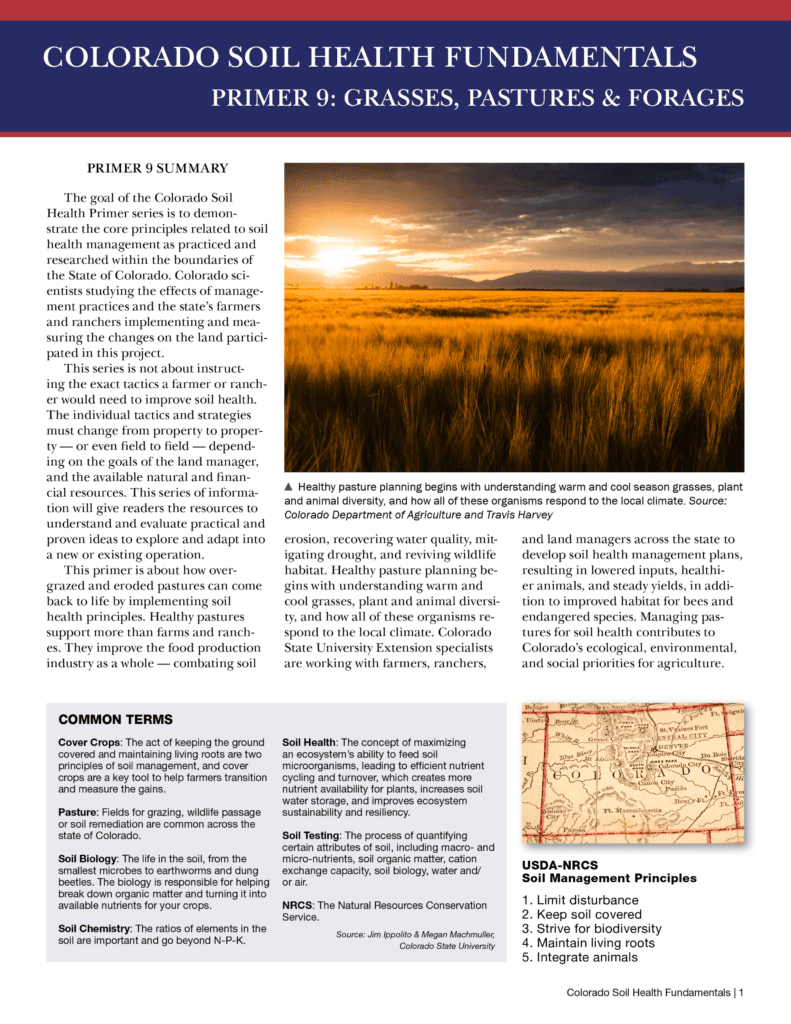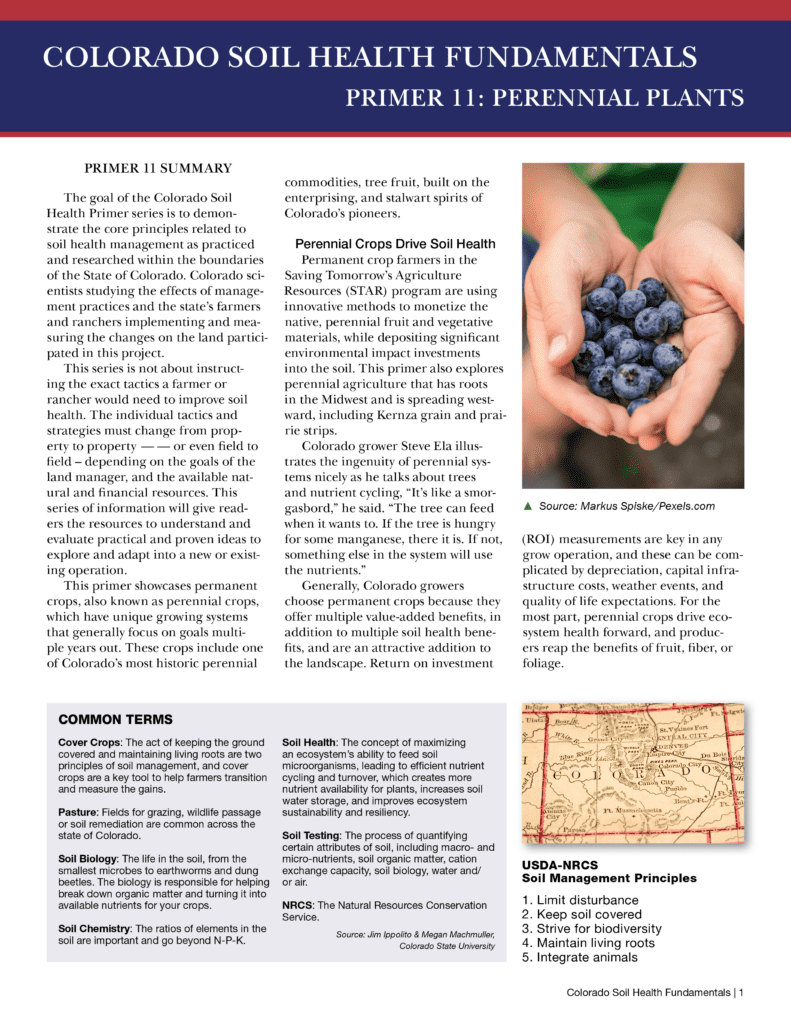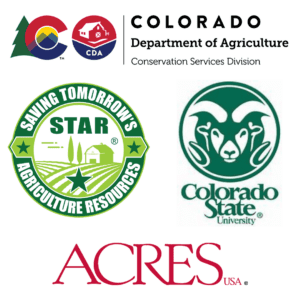
Get ready to take your farming operation to the next level with Acres USA and the STAR program!
This educational page is packed with primers that are specifically designed for the Colorado Department of Agriculture, in collaboration with our partners at Colorado State University.
These primers are more than just a set of fundamentals – they’re a common language that forms the basis of the state STAR program (Saving Tomorrow’s Agriculture Resources).
Whether you’re a seasoned farmer or just starting out, these primers will give you the tools you need to succeed in sustainable agriculture.
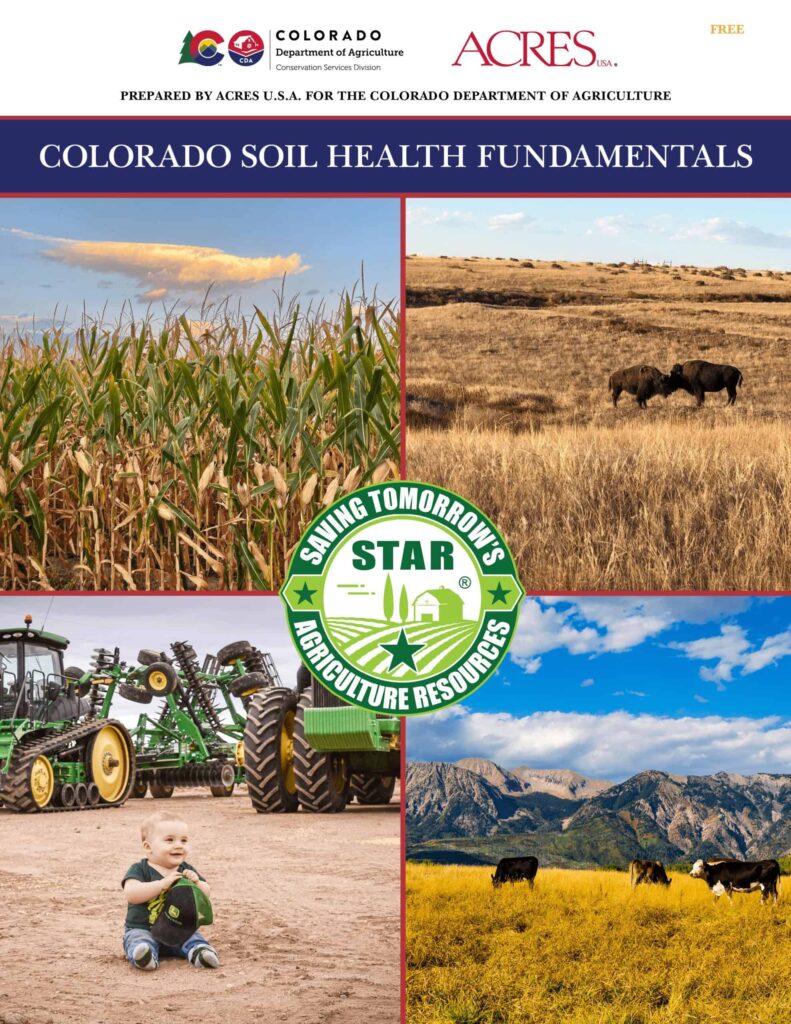
Table of Contents
Learn More
STAR uses a five-star rating system that allows farmers and ranchers to evaluate their current production system, identify areas for improvement, document their progress, and share their successes. The evaluation system assigns points for management activities on an annual basis and scores are converted to a 1 to 5 STAR Rating, with 5 STARs indicating the most ambitious commitment to a suite of practices proven to improve soil health, water quality and water availability. In Colorado, as of 2022, STAR evaluates 11 different cropping systems and grazing lands for soil health. Any Colorado farmer and rancher can fill out a STAR field form on CDA’s website to receive a STAR Rating and a free soil health test.
The STAR program’s financial incentives help farmers and ranchers absorb some of the risk of incorporating stewardship practices into their work.
- Learn more at the Colorado Soil Health Program home page.
- View photos and read the write-up from the first Colorado STAR event, held in Monte Vista, CO, on Aug. 13, 2022.
- View photos and read the write-up from the second Colorado STAR event, held in Rocky FOrd, CO, on Feb. 24, 2023.
- Sign up for weekly email newsletters dedicated to educators of Soil Health here.
- Acres U.S.A., the voice of Eco-Agriculture, is available to support your educational program. Reach out to us at info@acresusa.com to learn more.
Primer 1: Basics
The goal of the first installment in the Colorado Soil Health Primer series is to demonstrate the core principles related to soil health management as practiced and researched within the boundaries of the State of Colorado.
This project included the participation of Colorado scientists studying the effects of management practices, as well as many Colorado farmers and ranchers stimulating and measuring the changes on the land.
In this series, the key terms were defined and localized by set of experts, including farmers and Megan Machmuller, who researches soil health and data with Colorado State University, and her colleague, Jim Ippolito, Professor of Soil Health and Environmental Quality.
Primer 2: Drought Mitigation
This primer is focused on Drought Management and Soil Health, and will share strategies to build soil carbon and biology that can help producers better manage their operations in an era of increased stresses on water availability and quality.
The Colorado STAR program supports soil health practices designed to build systems that create soil armor, minimize soil disturbance, increase plant diversity, ensure continual live plants and roots, and, when appropriate, integrate livestock. These practices, along with a focus on measuring and managing soil biology, carbon and other key elements that hold and store water in the soil, will help producers in the state ensure both their resilience and their continued economic viability.
Primer 3: Cover Cropping
In this primer, readers will learn about how cover crops can improve soil health when managed correctly, how some Colorado farmers are using cover crops, and what benefits they are seeing in their operations.
Cover crops are a tool for land and crop managers who want to follow the STAR program fundamentals of keeping the ground covered and keeping a living root in the ground. By introducing cover crops into a rotation in Colorado, farmers and ranchers are finding improved water storage capacity, less erosion, and increases in soil biology and plant resilience.
The key in introducing cover crops is ensuring the plant is digestable when terminated.
Primer 4: Beyond N-P-K
This series is not about instructing the exact tactics a farmer or rancher would need to improve soil health. The individual tactics and strategies must change from property to property — or even field to field — depending on the goals of the land manager, and the available natural and financial resources. This series of information will give readers the resources to understand and evaluate practical and proven ideas to explore and adapt into a new or existing operation.
The Colorado Saving Tomorrow’s Agriculture Resources (STAR) program encourages farmers and ranchers to think differently about their soil fertility and health, and to think beyond nitrogen, potassium and phosphorus and the N-P-K input systems.
Primer 5: Soil Biology & Fungal Networks
This series is not about instructing the exact tactics a farmer or rancher would need to improve soil health. The individual tactics and strategies must change from property to property — or even field to field — depending on the goals of the land manager, and the available natural and financial resources. This series of information will give readers the resources to understand and evaluate practical and proven ideas to explore and adapt into a new or existing operation.
In this primer, readers will learn why it’s important to understand soil biology and discover strategies to enhance the biology of the soil of their operation.
Primer 6: Tillage / No-Tillage
This primer is about the benefits and challenges associated with implementing reduced tillage strategies.
Many Colorado growers and land managers have adopted no-till practices in order to decrease soil erosion, fuel usage, and labor costs while simultaneously increasing soil moisture retention, soil carbon, soil organic matter, and farm profit.
Farmers and ranchers are increasingly recognizing that tillage and soil disturbance interrupts the natural cycles that make agriculture possible. There are, however, challenges with no-till practices; these include possible increased weed populations and soil compaction.
Primer 7: Insect & Weed Protection
This primer is about how to think about agronomic weeds and pests from a soil health perspective.
By common definition, weeds are plants in a commercial cropping system that are perceived as having more negative factors than positive factors. Usually that means that they grow aggressively in places where land managers, such as farmers, ranchers, and park supervisors, do not want them to grow.
In practice, management tactics can vary significantly depending on the type of farming system employed.
Primer 8: Livestock Integration
This Primer is about incorporating animals into your operation to improve soil health while adding to farm profits.
Livestock are a soil health tool that, when properly managed, can amplify carbon and nutrient cycling and can result in healthier pastures, reduced soil nutrient losses, mitigated weed pressure, livestock waste reduction and an overall improvement in animal health.
To gain the most from this practice, producers must make the effort to define their resources and expectations both for the soil and for the livestock operation.
Primer 9: Grasses, Pastures & Forages
This primer is about how overgrazed and eroded pastures can come back to life by implementing soil health principles.
Healthy pastures support more than farms and ranches. They improve the food production industry as a whole — combating soil erosion, recovering water quality, mitigating drought, and reviving wildlife habitat.
Healthy pasture planning begins with understanding warm and cool grasses, plant and animal diversity, and how all of these organisms respond to the local climate.
Primer 10: Commodity Crops
This primer is focused on the production of commodity crops. Though commodity crops are second to livestock in dollar value of gross sales, they represent a significant share of the agricultural economy in Colorado.
The STAR program is collecting data to document which soil health management tactics help commodity growers spend less on inputs, and which tactics can help maintain or increase yields.
By the numbers, here is a look at Colorado’s providers:
Primer 11: Perennial Plants
This primer showcases permanent crops, also known as perennial crops (perennial plants), which have unique growing systems that generally focus on goals multiple years out.
These crops include one of Colorado’s most historic perennial commodities, tree fruit, built on the enterprising, and stalwart spirits of Colorado’s pioneers.
Colorado grower Steve Ela illustrates the ingenuity of perennial systems nicely as he talks about trees and nutrient cycling, “It’s like a smorgasbord,” he said.
Primer 12: Market Signals
This primer is about market signals and how Colorado farmers can look forward to achieving better economic returns when they adopt regenerative practices.
While there is no crystal ball we can consult in agriculture, we can see that the trajectory of demand for food produced via regenerative methods is sharply upward.
This, coupled with the reduced need for external inputs when regenerative practices are used, as well as the long-term benefits in productivity resulting from improved soil health, means that farmers employing such methods should be able to realize more profit.
Join The Colorado Ag Community
Don’t miss out on the opportunity to connect with other farmers, exchange ideas, and stay up-to-date on the latest agriculture trends.
Join our Colorado farming forums today and be a part of a thriving community dedicated to sustainable and profitable agriculture.






